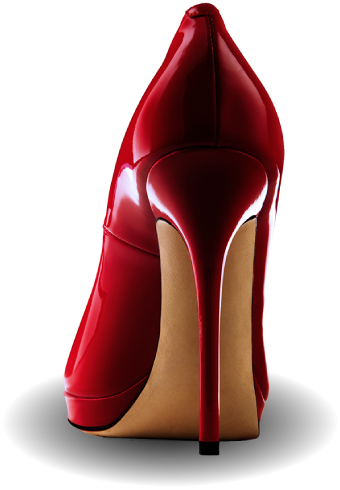When you try on a new pair of shoes, do you look for first? Style? Comfort? On most shoe shopping excursions, I am looking for the most flattering style I can run in (yes, even if it’s a pair of heels), without causing damage to me feet or my wallet. Most women can appreciate the leg-lengthening powers of a great pair of heels or the comfort of good arch support from a forgiving pair of Birkenstocks. Recently, however, a new flood of footwear trends has added greater meaning to the question I consider when shoe shopping, “What will these shoes do for me?”
My curiosity began at my cousin’s wedding reception last summer. Both Joshua and his wife Andrea (for the first time in history there are two Andrea Schpoks in the world) are avid cyclists and hikers. Two summers ago they spent 59 days biking 2,735 miles across the country together, camping out and blogging as they went. Somehow in the course of conversation that evening, my mom told me that Joshua and Andrea had the most interesting shoes. I had seen someone at the gym wearing the new Vibram Five Finger shoes (or “foot shoes” as I called them) earlier that summer and was incredibly fascinated by them. It turned out that these were the shoes that Josh and Andrea wore on many of their hiking and biking adventures. They weren’t wearing them at the reception but Andrea told me she would bring them to breakfast the next day so that I could try them on. When I finally slipped them on my feet I wasn’t entirely sure what I thought of them. I couldn’t help but to think that my feet looked rather frog-like with each toe defined and supported by the flexible rubber sole. Still, I was intrigued by their concept: Barefoot running has become a hot topic of discussion in the footwear and fitness worlds.
As evidence mounts that barefoot running may, in fact, be the long-lost art that optimizes human performance and strengthens foot and calf muscles to keep our bodies better aligned, several shoe companies have bought in to the trend. Nike offers its version, Nike Free 5.0, designed to simulate barefoot running while keeping your soles protected and MBT presents “the anti shoe” which sets its buyers off balance in order to simulate the natural, soft, uneven surfaces humans were designed to walk on. Vibram Five Fingers are probably the most apparent with their purpose; These shoes not only simulate the barefoot experience, like a gloves for the feet, these shoes look the part as well.
I eventually caved in to my curiosity and bought a pair for myself. According to research, we run differently without the padding of traditional athletic shoes so that we are less likely to strike with our heels (an impact that is hard on the body). I do notice that I tend to step more lightly when my feet hit the ground because I can’t rely on my shoes for protection and that my calves are sore after a long run. I haven’t and probably wouldn’t make the switch to these shoes as full-time athletic gear but I think that throwing them into the mix has been a worthwhile and satisfying experiment.
My take on the influx of fitness shoes on the market:
- A shoe that wobbles is not a good replacement for time at the gym and probably not the best look when you want people to take you seriously. Throwing you off balance may burn a few extra calories and help engage muscles so I can’t discard the idea completely but if you do go for them don’t abandon your workout routine.
- Barefoot shoes are great but only if you can afford a second pair of regular athletic shoes to wear on cold days and for activities that you want to keep your toes protected.
- Try to find research on any kind of new “shoe technology” that is published from a reputable organization that isn’t sponsored by the shoe company… Make sure the facts are there before you buy!





